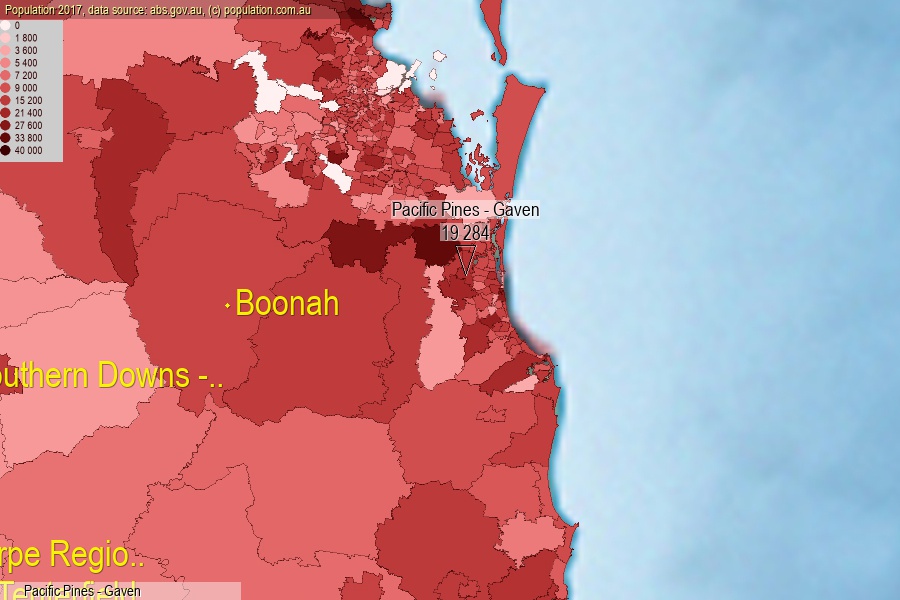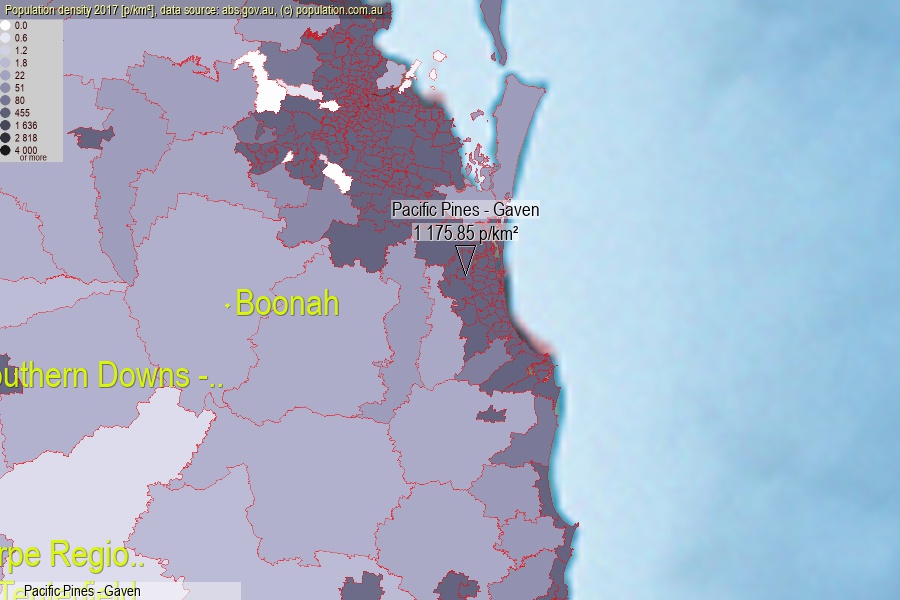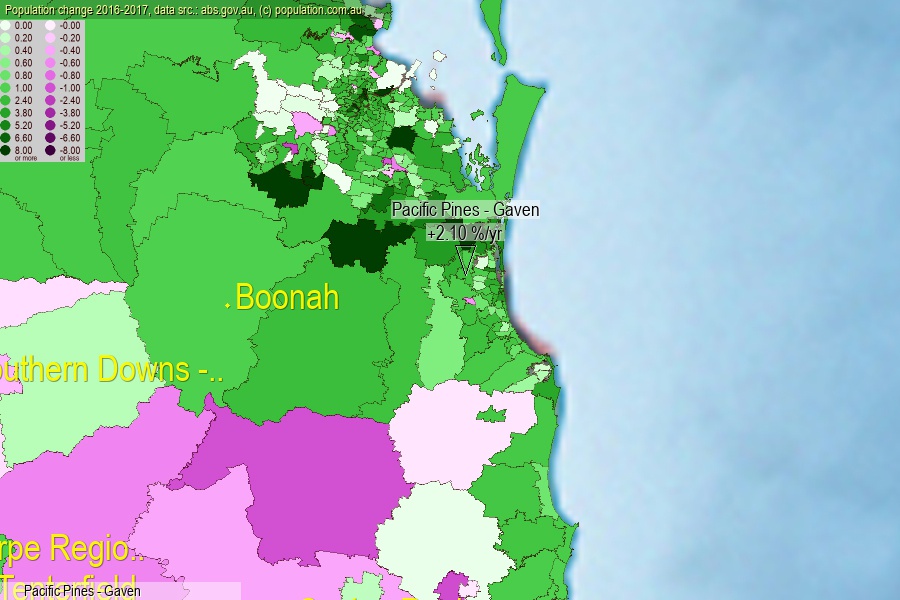 population.com.au
population.com.auLast official estimated population of Pacific Pines - Gaven (as Statistical Area Level 2) was 19 284 people (on 2017-06-30)[2]. This was 0.08% of total Australian population and 0.386% of QLD population. Area of Pacific Pines - Gaven is 16.40 km², in this year population density was 1 175.85 p/km² . If population growth rate would be same as in period 2016-2017 (+2.1%/yr), Pacific Pines - Gaven population in 2025 would be 22 776. [0]



Click to enlarge. Pacific Pines - Gaven is located in the center of the images.
Population [people], population density [p./km²] and population change [%/year] [2]
View borders » (new window) [4]
[1991-1992] +27.94 %/Yr.
[1992-1993] +39.08 %/Yr.
[1993-1994] +43.88 %/Yr.
[1994-1995] +30.18 %/Yr.
[1995-1996] +13.36 %/Yr.
[1996-1997] +12.88 %/Yr.
[1997-1998] +11.35 %/Yr.
[1998-1999] +11.71 %/Yr.
[1999-2000] +17.69 %/Yr.
[2000-2001] +10.00 %/Yr.
[2001-2002] +26.10 %/Yr.
[2002-2003] +24.88 %/Yr.
[2003-2004] +12.92 %/Yr.
[2004-2005] +11.37 %/Yr.
[2005-2006] +12.64 %/Yr.
[2006-2007] +11.82 %/Yr.
[2007-2008] +9.50 %/Yr.
[2008-2009] +8.08 %/Yr.
[2009-2010] +6.73 %/Yr.
[2010-2011] +4.32 %/Yr.
[2011-2012] +4.00 %/Yr.
[2012-2013] +3.52 %/Yr.
[2013-2014] +2.12 %/Yr.
[2014-2015] +0.76 %/Yr.
[2015-2016] +0.96 %/Yr.
[2016-2017] +2.10 %/Yr.
[0] Calculated with linear interpolation from officially estimated population
[1] Read more about SA2 and Australian Statistical Geography Standard (ASGS) on abs.gov.au
[2] Population data from Australian Bureau of Statistics (Population and density: 2017; change: 2016-2017)
[3] Digital Boundaries: Australian Statistical Geography Standard (ASGS) 2016.
[4] Border coordinates are simplifyed using Ramer-Douglas-Peucker algorithm.